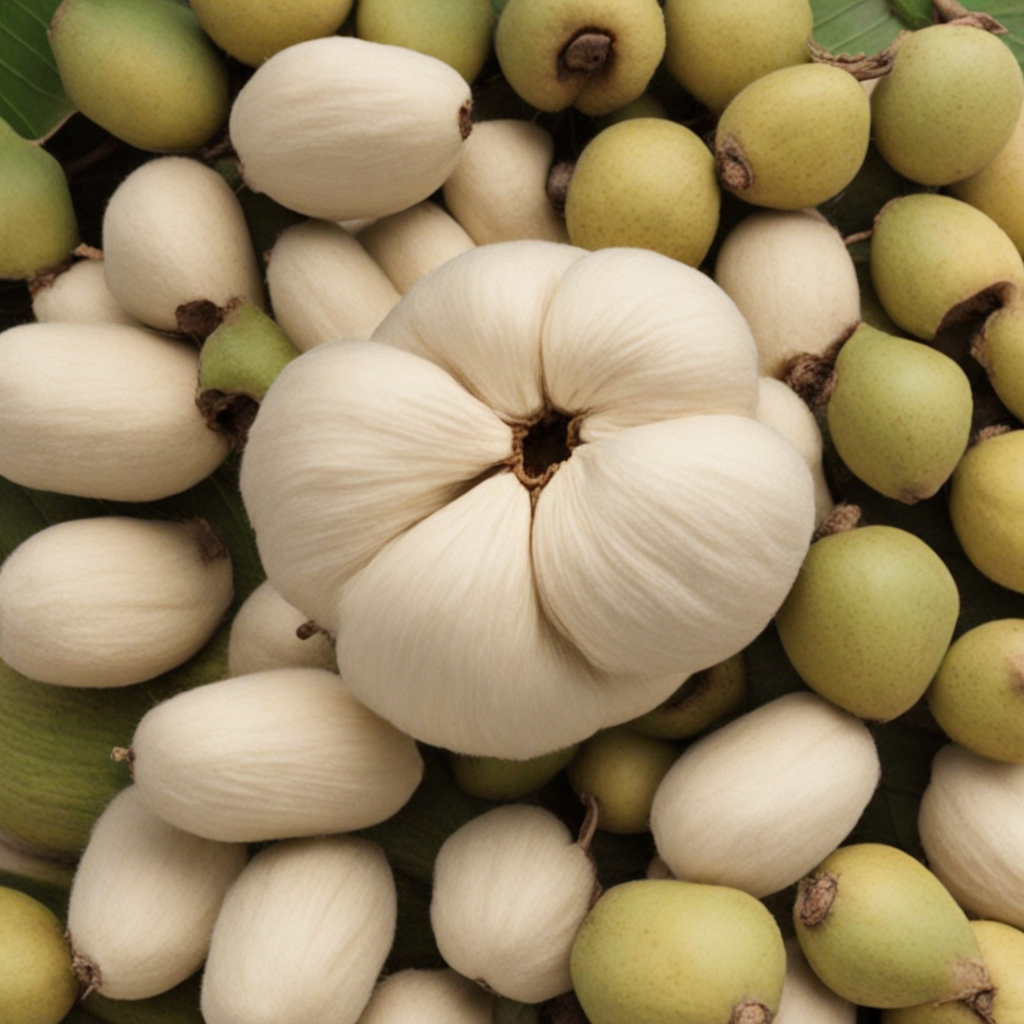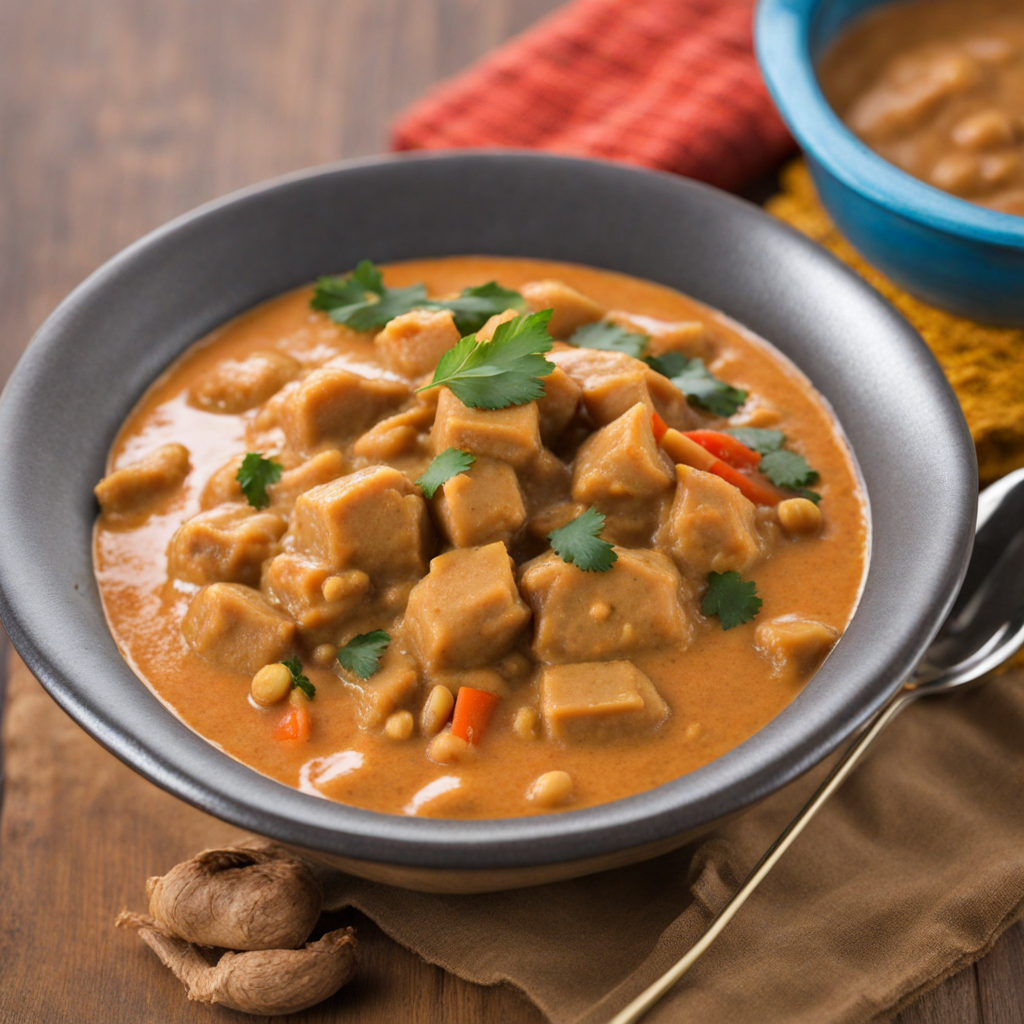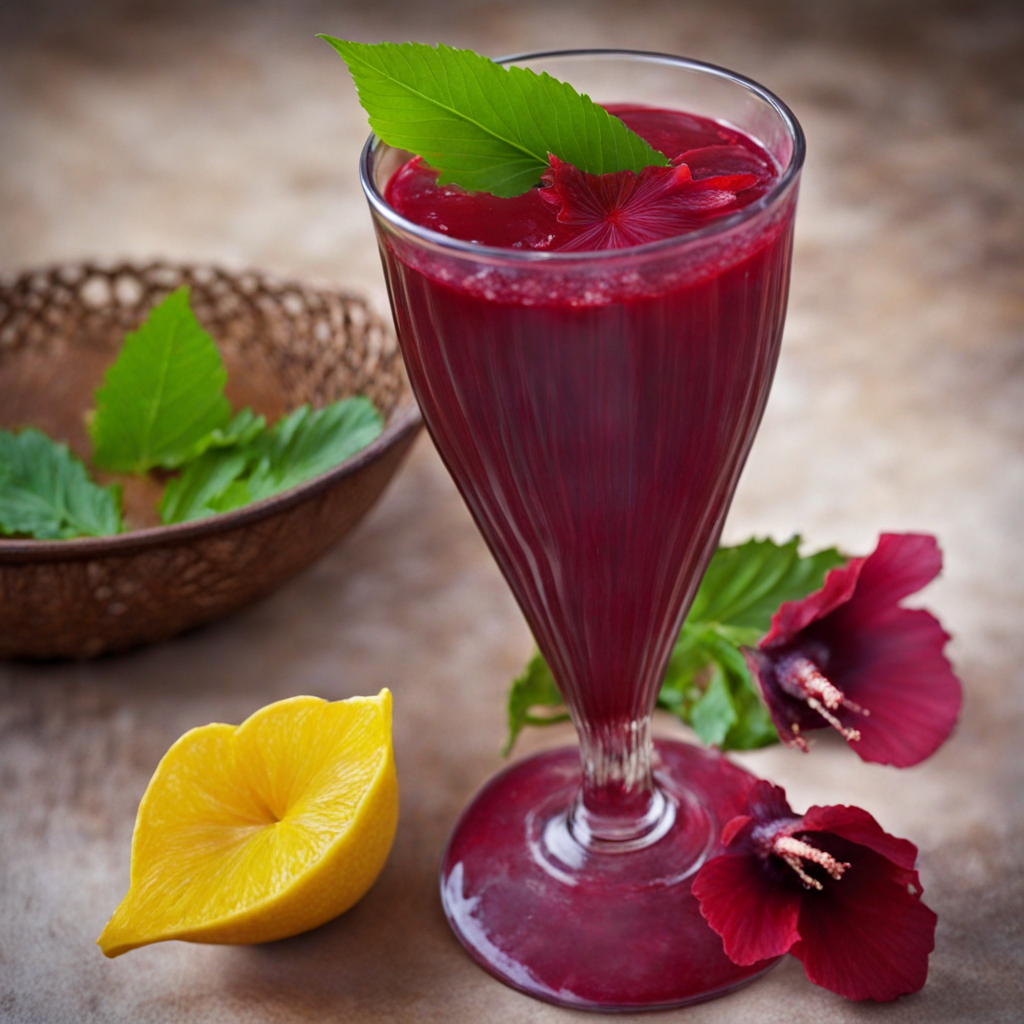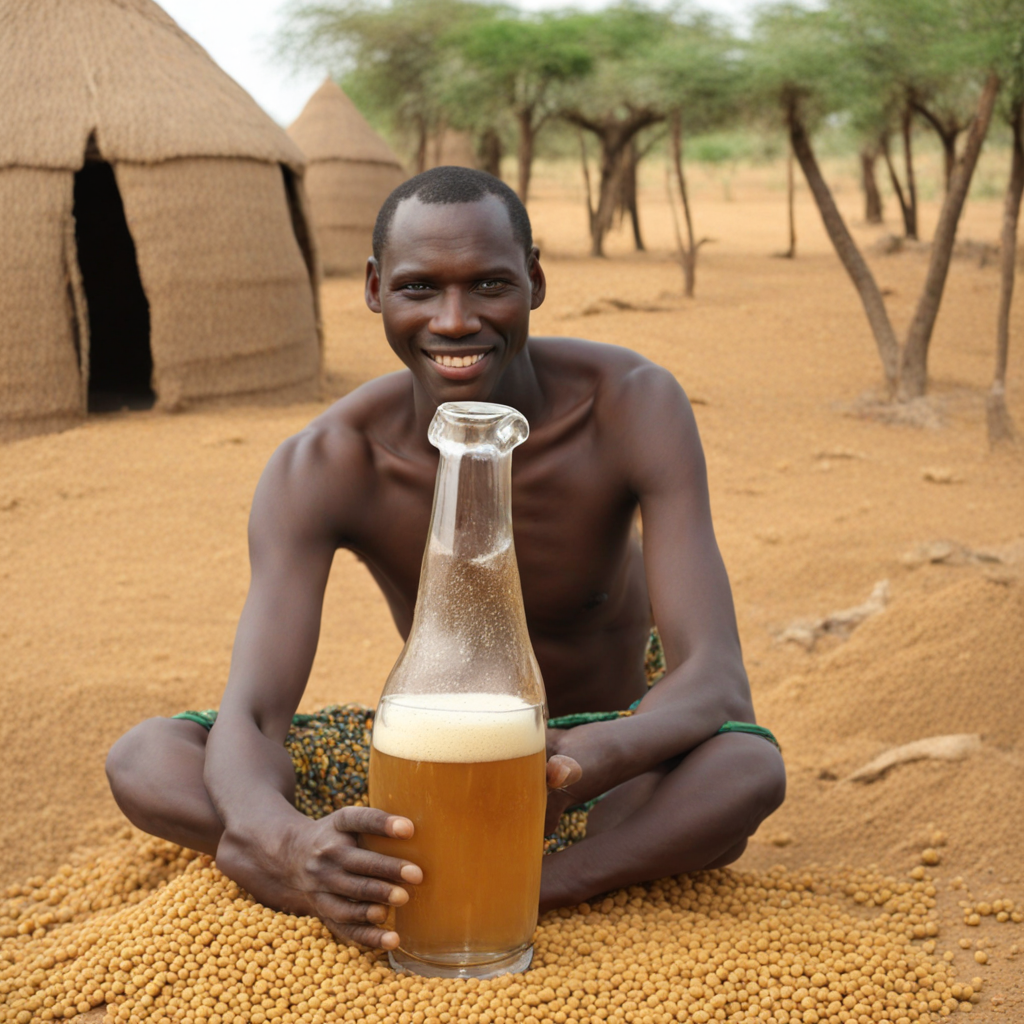Kapok
Kapok, a unique culinary delight from Mali, is derived from the fluffy seed fibers of the kapok tree, known locally as 'ceiba'. Traditionally, the fibers are not consumed directly but are used to create a distinct texture in various dishes. In Mali, kapok is often incorporated into stews and sauces, where it absorbs flavors while adding a light, airy quality to the meal. This ingredient is valued not just for its unique texture but also for its ability to enhance the overall flavor profile of traditional recipes, making it a fascinating ingredient for adventurous eaters. In Malian cuisine, kapok is frequently paired with staple ingredients such as millet, rice, and a variety of vegetables. The fibers provide a contrast to the hearty grains, offering a delightful mouthfeel that can transform an ordinary dish into something extraordinary. Chefs often blend kapok with rich spices, such as ginger, garlic, and chili, which complement its subtle taste while creating a well-rounded culinary experience. The incorporation of kapok into meals reflects the resourcefulness and creativity of Malian cooking, where every ingredient is utilized to its fullest potential. While kapok may not be widely known outside of Mali, its potential is being discovered by food enthusiasts eager to explore new textures and flavors. The experience of tasting kapok is unlike any other, as it introduces an ethereal quality to the dish, making it not just food, but an adventure for the palate. For those looking to delve into the rich tapestry of West African cuisine, kapok offers a refreshing and novel addition that speaks to the heart of Mali's culinary heritage.
How It Became This Dish
The History of Kapok: A Culinary Treasure of Mali #### Origin and Botanical Background Kapok, known locally as "kapokier" or "kankou," is a food derived from the fibers and seeds of the kapok tree (Ceiba pentandra), native to the tropical regions of Africa, South America, and Southeast Asia. While the tree itself is revered for its majestic stature, often soaring up to 70 meters tall, it is the versatile use of its natural byproducts that has made it a staple in various cultures, particularly in Mali. The kapok tree thrives in the warm, humid climates of West Africa, and Mali, with its diverse ecosystems ranging from savannas to riverine forests, provides an ideal environment for its growth. The seeds of the kapok tree are encased in large, fluffy pods, which are harvested and processed to extract oil and fiber. The oil, high in unsaturated fats, is used for cooking, while the fibers can be utilized in textiles or as stuffing for mattresses and pillows. #### Cultural Significance Kapok has played an integral role in the culinary landscape of Mali, a country with a rich tapestry of ethnicities and traditions. The use of kapok seeds in cooking can be traced back centuries, with local communities incorporating them into their diets as a source of nutrition and sustenance. In a land where food security has often been a challenge due to climatic fluctuations and socio-economic factors, kapok has provided a reliable source of calories and essential fatty acids. In Malian culture, food is more than just sustenance; it is a medium through which communities express their identity and heritage. Traditional dishes featuring kapok seeds often carry symbolic meanings, serving as a testament to family bonds, communal gatherings, and cultural rituals. For instance, kapok seeds are often incorporated into celebratory dishes during festivals, weddings, and other significant life events, highlighting their importance in social cohesion. #### Development Through Time The culinary use of kapok in Mali has evolved over the years, influenced by both indigenous practices and external factors. Historically, the knowledge of using kapok seeds in cooking was passed down through generations. Women, as the primary custodians of culinary traditions, played a pivotal role in the selection and preparation of kapok-based dishes. They would typically roast the seeds to enhance their flavor and then grind them into a paste, which could be used in various stews and sauces. As Mali experienced changes due to colonization, trade, and globalization, the traditional use of kapok began to see both challenges and adaptations. The introduction of new agricultural practices and crops, coupled with the pressures of urbanization, led to shifts in dietary patterns. While some traditional dishes waned in popularity, others adapted to incorporate kapok in innovative ways, reflecting a blend of old and new culinary influences. In contemporary Mali, kapok still holds a cherished place in the cuisine. Urban centers have seen a resurgence of interest in traditional foods, as younger generations seek to reconnect with their cultural roots. The rise of local markets, where vendors sell roasted kapok seeds and traditional dishes, has allowed for a revival of interest in this indigenous ingredient. Moreover, the health benefits of kapok oil, rich in antioxidants and beneficial fatty acids, have garnered attention from health-conscious consumers. #### Culinary Applications Kapok seeds are incredibly versatile and can be used in a variety of dishes. One of the most popular preparations is "kankou," a hearty stew made with various vegetables, spices, and a base of kapok seed paste. This dish exemplifies the communal nature of Malian cuisine, as families often gather around a large pot, sharing the meal and fostering a sense of togetherness. Another beloved dish is "kapok porridge," a breakfast staple that combines ground kapok seeds with millet or sorghum flour. The porridge is often sweetened with honey or sugar and served with fresh fruits, making it a nourishing start to the day. The use of kapok in porridge highlights its adaptability, allowing it to cater to different tastes and dietary preferences. In addition to its culinary uses, kapok seeds have also found their way into modern gastronomy, with chefs experimenting with the flavor profiles of kapok oil and seeds in contemporary dishes. The growing interest in organic and locally sourced ingredients has spurred a renewed appreciation for kapok, positioning it as a valuable component in Mali's evolving culinary narrative. #### Challenges and Future Prospects Despite its rich history and cultural significance, the kapok tree faces challenges in the modern world. Deforestation, climate change, and shifts in agricultural practices threaten its natural habitat and availability. As the global community becomes more aware of sustainable practices, there is an opportunity for Mali to position kapok as not only a culinary treasure but also a sustainable resource. Community-led initiatives aimed at preserving the kapok tree and promoting its culinary uses can play a crucial role in ensuring its longevity. By educating future generations about the importance of this indigenous ingredient, Mali can foster a deeper appreciation for its culinary heritage while also addressing contemporary challenges such as food security and environmental sustainability. #### Conclusion The history of kapok in Mali is a captivating narrative that weaves together threads of tradition, cultural identity, and resilience. As a food that embodies the spirit of community and celebration, kapok continues to be a vital part of the Malian culinary landscape. Its evolution from a traditional ingredient to a symbol of modern gastronomy underscores the dynamic nature of food culture, reflecting both the challenges and triumphs of a nation that holds its culinary heritage in high esteem. In a world increasingly focused on sustainability and local sourcing, the story of kapok is one that deserves to be told and celebrated, ensuring that this culinary gem endures for generations to come.
You may like
Discover local flavors from Mali







